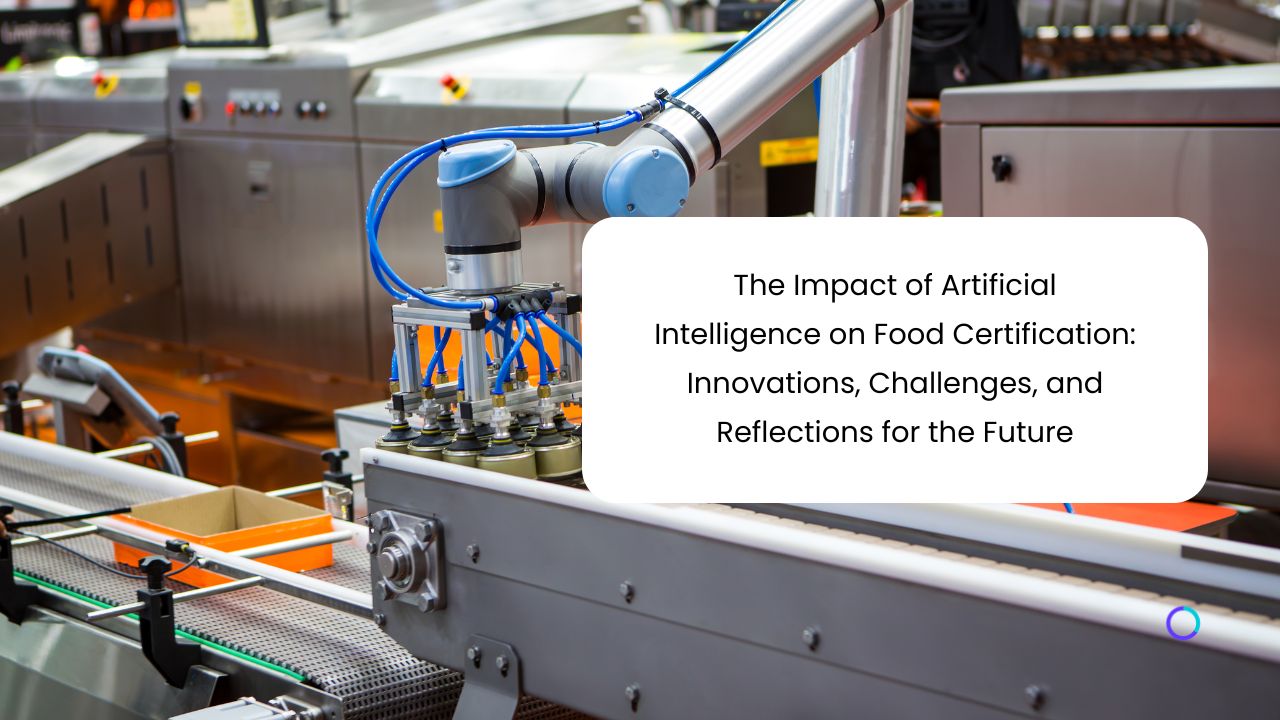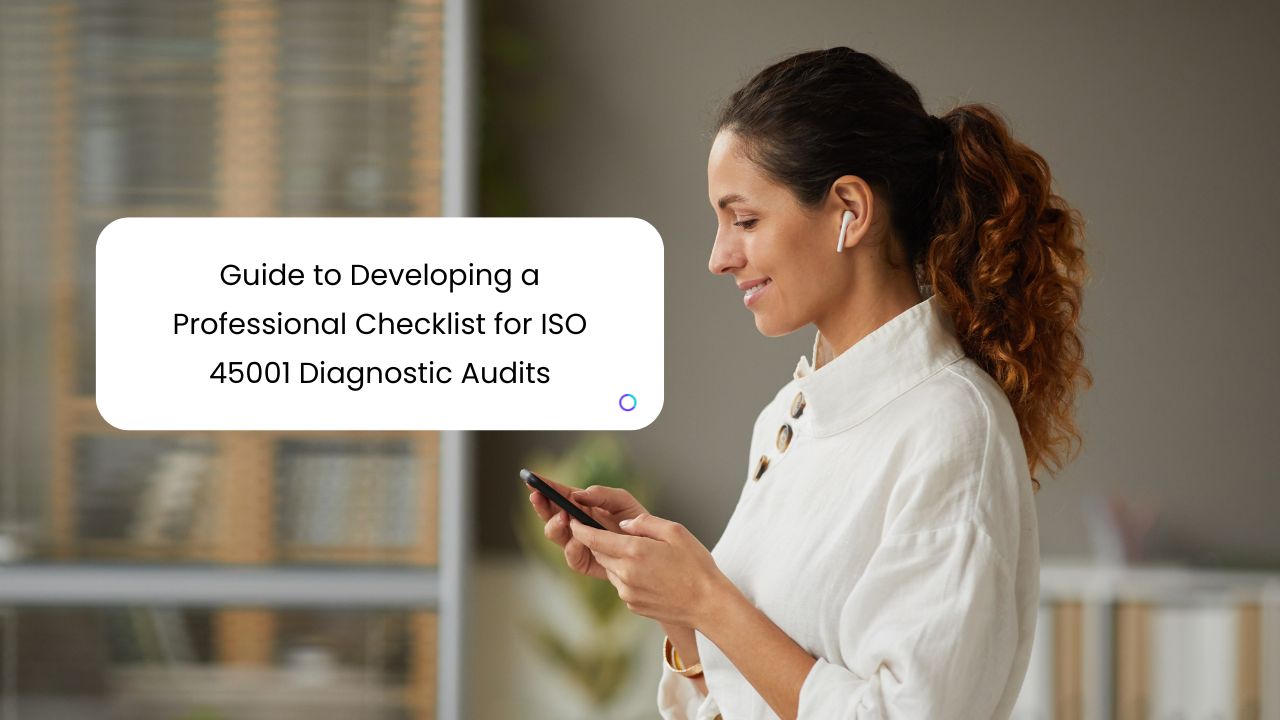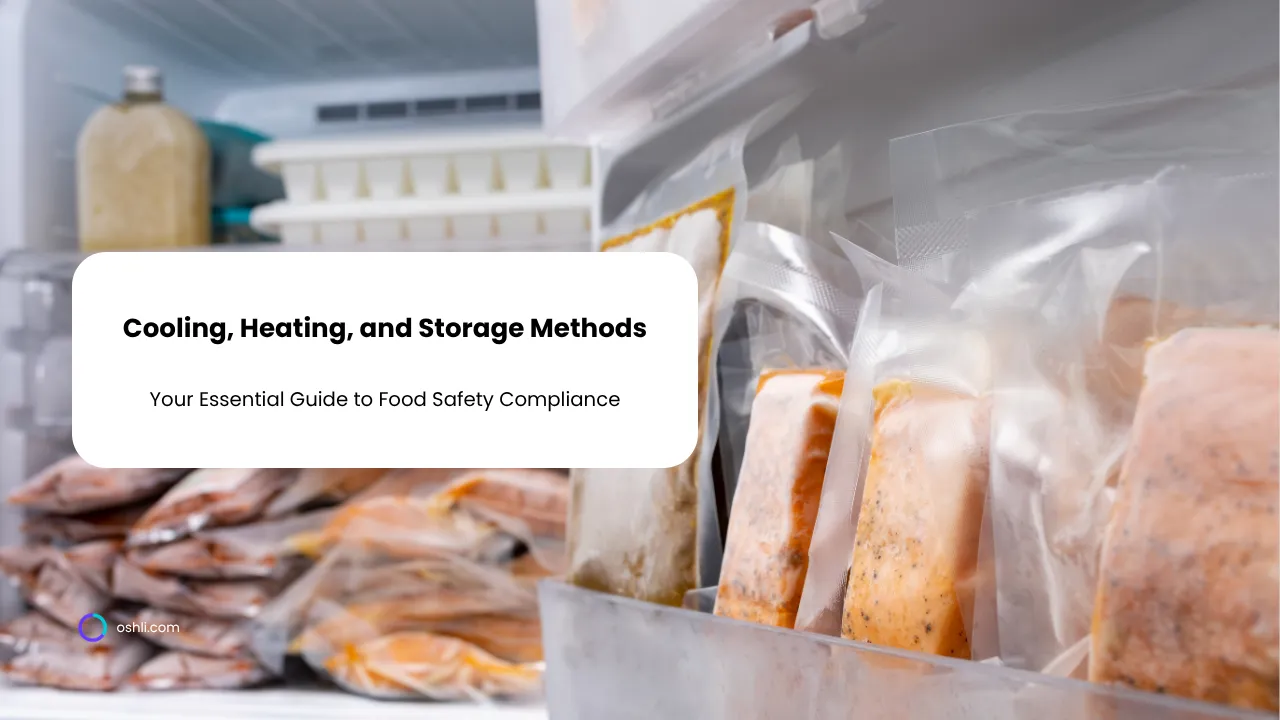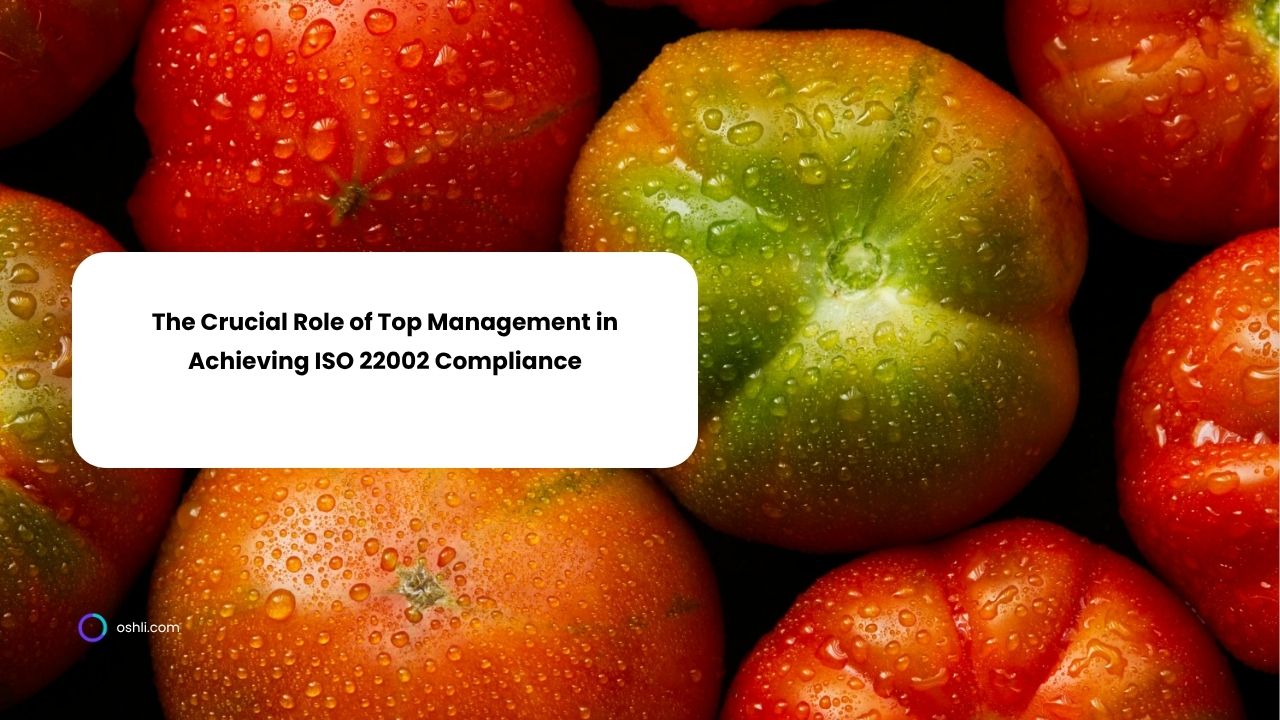
The Impact of Artificial Intelligence on Food Certification: Innovations, Challenges, and Reflections for the Future
The food industry is one of the most critical and highly regulated sectors in the world. Over the years, it has evolved by constantly improving its processes to ensure that the food we consume is both safe and compliant with international standards. Food certification systems, such as ISO 22000 and HACCP (Hazard Analysis and Critical Control Points), play a vital role by providing a robust framework for quality and safety controls.
But with the advent of artificial intelligence and digital transformation, many experts now ask: How can AI improve—or even disrupt—the traditional methods of food certification? Could automation and machine learning provide even greater assurances of quality, or might we inadvertently open the door to new vulnerabilities and ethical dilemmas?
In the following sections, we’ll explore these questions in detail, examining both the opportunities and the risks associated with integrating AI into food certification processes. I invite you to journey through this evolving landscape, where technology meets tradition, prompting us to critically rethink the future of food safety.
2. The Evolution of Food Certification
Food certification has come a long way from the days of manual inspections and rudimentary checks. For decades, physical audits and on-site verifications were the norm for ensuring compliance with safety standards. As technology advanced, digital systems began to complement and, in many cases, enhance these traditional methods.
Today, integrated software systems and digital management platforms offer a more holistic and dynamic view of the production process. Despite these improvements, most certification systems still heavily rely on human intervention—whether it’s for data interpretation, risk identification, or decision-making. And this is exactly where artificial intelligence comes into play.
With AI, we have the potential to significantly increase accuracy in analyses and reduce human error. But this innovation also prompts us to ask: Can automated systems truly offer superior safety guarantees? Or are we risking the delegation of crucial, human-centered decisions to machines?
3. The Role of Artificial Intelligence in Food Certification
Artificial intelligence encompasses a range of technologies—from machine learning and deep learning to predictive analytics and natural language processing. In the realm of food certification, these tools are finding application in several exciting ways:
3.1. Continuous Monitoring and Risk Prevention
One of the most promising applications of AI is its ability to continuously monitor production and storage conditions. Imagine smart sensors connected to an AI system that analyze real-time data and detect anomalies—like unexpected temperature changes, humidity issues, or cross-contamination risks. This proactive monitoring not only makes audits more efficient but also enables immediate interventions before problems escalate.
For instance, machine learning algorithms can be trained on vast amounts of data collected from equipment and facilities. If the system notices an unusual pattern, it can alert responsible personnel well before a catastrophic failure occurs. It’s a significant upgrade from the periodic audits of the past.
3.2. Data Analysis and Decision-Making
Data has become the new currency in today’s world, and food certification is no exception. AI allows us to dive into massive datasets, extracting insights that might be invisible to the naked eye. By optimizing risk assessments, AI helps identify critical control points that need extra attention.
Moreover, AI can support the standardization of audit processes. Instead of relying solely on subjective judgments from human auditors, AI-based systems can highlight areas that require intervention based on objective metrics. Yet, this raises an important question: To what extent can we trust decisions made by automated systems? How do we ensure that these algorithms remain unbiased and fair?
3.3. Automation and Reduction of Human Error
Human error is one of the main causes of failure in food certification systems. AI has the potential to drastically reduce these mistakes by automating repetitive tasks and standardizing processes. For example, the collection and analysis of audit data can be automated, freeing auditors to focus on more strategic and critical aspects.
However, complete automation also brings concerns. If an AI system is responsible for crucial decisions—like granting or revoking a certification—are we ready to handle the fallout from a potential error or malfunction? Trusting technology blindly might obscure the need for ongoing human oversight.
3.4. Traceability and Transparency
Traceability is central to food certification. AI can seamlessly integrate data from multiple sources—from production fields to the end consumer—ensuring unprecedented transparency along the supply chain. This integration not only helps in pinpointing failures quickly but also boosts consumer trust in certified products.
Yet, this massive data integration prompts questions about privacy and information security. How can we ensure that the data collected is used solely for enhancing food safety? And what level of transparency is acceptable without compromising sensitive or proprietary information?
4. Real-Life Examples and Success Stories
Many companies and certification bodies are already experimenting with AI-driven solutions to optimize food certification processes. Here are a few practical examples that illustrate how this technology is being applied:
4.1. Smart Sensors and Real-Time Monitoring
Large food processing plants are now installing smart sensors in cold storage facilities and production lines. These sensors are linked to AI systems that continuously monitor factors like temperature, humidity, and contaminant levels. When a parameter deviates from acceptable limits, the system automatically issues an alert so that corrective actions can be taken immediately.
This continuous monitoring not only minimizes contamination risks but also helps reduce operational costs—quick intervention prevents significant losses. However, one must wonder: What happens if a sensor fails or if the algorithm misinterprets the data? Are we prepared for such uncertainties?
4.2. Machine Learning Algorithms for Risk Analysis
Some food certification bodies have started using machine learning algorithms to analyze historical audit data and identify patterns of non-compliance. By correlating data across different companies, these systems can predict which processes are more likely to encounter safety issues. This targeted approach helps auditors focus on high-risk areas, thereby optimizing resources and improving audit effectiveness.
Yet, this method also brings up critical concerns: Are the algorithms as impartial as the data they receive? What if historical data contains biases or gaps? Such questions remind us that the quality and source of data are as crucial as the algorithms themselves.
4.3. Integrated Digital Traceability Solutions
Digital traceability platforms that combine blockchain technology with AI are gaining ground in the food sector. These systems ensure that every step—from sourcing ingredients to the final product—is recorded in an immutable ledger. AI analyzes this comprehensive data to identify potential contamination points and confirm compliance with international safety standards.
However, integrating so many technologies opens a new can of worms: How do we ensure that these different systems work well together? What about cybersecurity, or the sheer complexity of managing so many data points? While these integrated solutions promise unparalleled transparency and safety, they also compel us to question whether we’re introducing new vulnerabilities in our quest for innovation.
5. Ethical and Operational Challenges
While AI offers exciting prospects for food certification, its application is not without significant ethical and operational challenges. As we celebrate increased efficiency and precision, we must also grapple with dilemmas that require thoughtful analysis.
5.1. Algorithm Transparency
One of the biggest challenges is the transparency of AI algorithms. Often, these algorithms operate as “black boxes” where even their developers struggle to fully explain how decisions are made. If an automated system flags a company as non-compliant based on criteria that are not clearly understood, how can we trust its judgment? Lack of transparency can erode both professional and consumer confidence in food certification.
5.2. Bias and Discrimination
Machine learning models are only as good as the data they receive. If the input data is biased or incomplete, the outcomes may reflect those shortcomings. This can lead to situations where companies are unfairly penalized or, conversely, genuine risks are overlooked. Ensuring that AI systems remain fair and free from bias is a critical ethical challenge that cannot be ignored.
5.3. Overreliance on Technology
Although automation brings numerous benefits, excessive dependence on technology can be problematic—especially if systems fail or are compromised by cyberattacks. Food certification, by its very nature, demands trust and integrity. If AI-driven systems are compromised, the entire supply chain could be at risk. This begs the question: Are we ready to manage the fallout from a systemic technological failure?
5.4. Data Privacy and Security
The integration of AI in food certification involves collecting and storing vast amounts of data—from sensitive production details to personal information about employees. Protecting this data is paramount. What would be the impact of a data breach in a system that monitors food safety? How do we strike the right balance between transparency and the need to safeguard strategic information?
5.5. Social Impact and Workforce Changes
The automation of certification processes could lead to a reduction in the need for human labor in certain areas. While this might increase efficiency and reduce errors, it also raises concerns about the displacement of skilled professionals. How can we balance technological innovation with the need to preserve jobs and nurture human expertise? This question transcends the food industry, impacting society as a whole.
Reflect for a moment: Can automation truly replace the nuanced judgment of a human expert without compromising the sensitivity needed for critical decision-making?
6. Reflections and Questions for the Future
As we examine the impact of artificial intelligence on food certification, many questions naturally arise:
-
Can AI completely replace human intervention in food safety audits?
While AI may boost efficiency and reduce mistakes, the complexity of food processes and the need for contextual judgment still require human oversight. Could a fully automated system ever capture the nuances that only human experience can provide? -
How can we ensure the fairness and transparency of AI algorithms?
The reliability of AI depends on the quality of data and the clarity of its decision-making process. Developing models that are transparent and auditable is essential if we are to avoid bias and ensure fairness in food certification. -
Are we truly prepared to handle the technological vulnerabilities?
Cybersecurity remains one of the greatest challenges in our digital age. If AI-based certification systems fall prey to attacks, what will be the repercussions for food safety and corporate reputations? How can these risks be mitigated without sacrificing the benefits of automation? -
What is the right balance between automation and human expertise?
AI should be seen as a tool to complement human judgment, not as a substitute. Yet, as technology advances, how do we ensure that human knowledge remains valued and that automation doesn’t overshadow critical decision-making? -
What ethical implications arise from using AI in food certification?
Delegating critical safety decisions to machines raises ethical questions—from algorithm transparency to accountability in case of failure. Can society be ready to assume the consequences when certification increasingly depends on automated systems?
These questions remind us that even as technology promises to revolutionize food certification, there is still much to learn and refine. The debate is far from settled, and the answers depend on both technological progress and our willingness to adapt to a rapidly changing world.
7. The Future of Food Certification: Possible Scenarios
Looking ahead, we can envision several scenarios where artificial intelligence becomes deeply integrated into food certification processes. Here are a few of the most discussed possibilities:
7.1. Food Certification 4.0
Imagine a future where every step—from production to distribution—is connected and analyzed in real time by AI systems. In this scenario, traditional audits could give way to continuous monitoring and predictive analysis, offering a dynamic, always-on approach to food safety. Yet, one must wonder: What will be the cost of implementing such a fully integrated infrastructure? And how do we manage the flood of data to ensure that automated analysis truly reflects the realities of each stage?
7.2. Hybrid Audits: Merging Digital and Human Insights
Another promising scenario is the hybrid audit model, where AI handles data collection and analysis while human auditors interpret the results and make strategic decisions. This combination could offer the best of both worlds—but it also raises a key question: How do we balance the role of human judgment with automation to avoid overlaps or gaps? And what new skills will tomorrow’s food safety professional need?
7.3. Democratizing Food Certification
With decreasing costs for AI technology and broader digital transformation, food certification might become more accessible for small and medium-sized enterprises. Today, many smaller businesses struggle to implement robust food safety systems due to limited resources. AI could offer more affordable, scalable solutions that democratize certification. However, this possibility also poses challenges: How do we ensure that cost-effective solutions maintain the rigorous standards required by international guidelines? Could mass adoption lead to a dilution of quality standards?
7.4. Regulatory Uncertainty and Standardization Challenges
As technology evolves, regulators will also need to catch up. One of the greatest uncertainties is how national and international legislation will adapt to a digital, automated certification landscape. The lack of uniform standards could create discrepancies in how food certification is applied, leading to confusion among businesses. Will regulators be able to establish frameworks that keep pace with innovation? And how will companies navigate an environment where rules might change as fast as the technology does?
8. Implementation Challenges and Global Adoption
Despite the immense promise of AI, its global implementation in food certification faces significant hurdles. Among these challenges are:
8.1. Technological Infrastructure
For AI to be effectively deployed in food certification, companies must have robust technological infrastructures. This means not only installing advanced sensors and IoT devices but also having reliable systems for data storage and processing. In many regions and for many businesses—especially smaller ones—such investments can be prohibitive.
8.2. Skill Development and Training
Introducing AI means that professionals need to acquire new skills and knowledge to both implement and supervise automated systems. Are we prepared for this shift? Developing effective training programs is essential to ensure that auditors and managers can fully leverage the benefits of AI while maintaining rigorous safety standards.
8.3. Cost and Return on Investment (ROI)
While AI can reduce operational costs and improve efficiency in the long run, the initial investment is often steep. Smaller companies may struggle to justify the expense without a clear, short-term ROI. This economic uncertainty might delay the widespread adoption of AI in food certification.
8.4. Compatibility with Legacy Systems
Many companies already have established management and certification systems. Integrating new AI-based technologies with these legacy systems can be complex and may even require a complete overhaul of existing processes. This integration challenge often sparks resistance within organizations, increasing the risk of implementation failures.
Think about this: Are we ready to invest in a future where technology is the backbone of food safety, even if the transition is demanding and full of challenges?
9. Impact on Food Quality and Traceability
Artificial intelligence holds the promise to redefine quality standards and traceability within the food industry. With predictive analysis, AI can detect subtle patterns of contamination and suggest preventive measures before issues become critical.
9.1. Enhancing Product Quality
By employing AI-driven systems, companies can detect faults and anomalies more swiftly and accurately, leading to continuous improvements in product quality. This proactive approach minimizes the risk of large-scale recalls and builds consumer trust. However, it also raises an important question: How much can technology truly replace the human eye in assessing quality? Could too much standardization dampen the creativity and flexibility that often drive innovation in food production?
9.2. Revolutionizing Traceability
Traceability is a critical component of food certification. With AI, data from various stages—from the farm to your plate—can be merged into one coherent system. This not only helps quickly pinpoint the source of any issue but also enhances overall transparency. Yet, the centralization of data could also lead to vulnerabilities. If a system breach occurs, could the entire supply chain be compromised? Balancing transparency with security remains an ongoing challenge.
10. Technological Innovation: Possibilities and Perspectives
The merging of artificial intelligence with food certification opens up exciting new avenues for technological innovation. Here are a few possibilities:
10.1. Predictive Analysis Tools
Imagine tools that can foresee future risks by analyzing historical and real-time data. A system might notice slight deviations in a production process and predict a possible contamination event—allowing for corrective actions well before a crisis unfolds. Such proactive measures could be game-changing, but they also force us to ask: How reliable are these predictions, and can we fully trust a machine’s foresight?
10.2. Augmented and Virtual Reality in Auditing
Another innovation on the horizon is the use of augmented reality (AR) and virtual reality (VR) during audits. Imagine auditors using AR glasses to see real-time data overlays while inspecting a facility or training sessions conducted in VR where scenarios of food safety risks are simulated. While these technologies could revolutionize training and inspections, they also require us to consider: Are we ready to embrace such radical changes in our traditional practices?
10.3. The Partnership of Blockchain and AI
Integrating blockchain with AI could provide an additional layer of security and transparency. AI would analyze the data, while blockchain would ensure that records remain immutable and accessible to all stakeholders. This combination might offer unprecedented trustworthiness in traceability, but it also prompts us to question scalability and system compatibility in a global market.
An intriguing thought to ponder: Are we ready to trust our food safety entirely to digital ledgers and algorithms?
11. Conclusion and Final Thoughts
Artificial intelligence is already shaping the future of food certification, introducing innovations that promise to enhance both the safety and quality of the food we consume worldwide. From smart sensors and big data analysis to machine learning, augmented reality, and blockchain integration, these technologies are redefining traditional methods and paving the way for more efficient and proactive safety systems.
Yet, as we embrace these advancements, we must not lose sight of the challenges they bring. Ethical concerns, the need for algorithm transparency, cybersecurity risks, and overdependence on technology are significant issues that require our constant vigilance. In a landscape that grows increasingly digital, the central question remains: Are we truly ready to entrust the integrity of our food safety systems to artificial intelligence?
Moreover, this digital transformation calls for a rethinking of the auditor’s role, a redefinition of quality parameters, and a careful balance between innovation and time-tested practices. It’s essential for companies, regulators, and professionals to collaborate in creating systems that are not only efficient but also fair, transparent, and resilient against potential failures.
While we celebrate the technological breakthroughs that AI offers, it is equally important to remain critical and inquisitive about the changes underway. After all, technology should serve as an ally in ensuring food safety—not become a source of unforeseen vulnerabilities. In our increasingly digital world, trust cannot be blind; it must be built on transparency, ethics, and a continuous quest for improvement.
Additional SEO keywords: digital transformation in food certification, innovation in food safety, future of certification, AI ethics, transparent audits, automation in the food industry, challenges in digital certification.
12. Reflections for an Uncertain Future
After exploring how AI impacts food certification, it’s natural to be filled with questions. Consider these thoughts as food for thought:
-
Can AI completely replace human oversight in food safety audits?
While AI enhances efficiency and minimizes errors, the intricacies of food processes and the necessity for contextual judgment still call for human involvement. -
How do we ensure our AI algorithms are both fair and transparent?
The success of these systems depends on unbiased data and clear decision-making processes. We must work together to build models that inspire confidence. -
Are we equipped to handle potential technological vulnerabilities?
In a world where cyber threats are real, the consequences of a security breach in food certification systems could be enormous. What measures can we take to safeguard these digital tools? -
What balance should be struck between automation and human expertise?
AI should enhance our capabilities, not replace the invaluable insights that experienced professionals provide. How do we keep that balance as technology evolves? -
What ethical implications arise from an AI-dominated certification process?
Delegating food safety decisions to algorithms raises ethical questions about accountability and fairness. Can we develop systems that are both innovative and just?
These questions aren’t meant to discourage us but to invite a deeper conversation about how we shape the future of food safety together.
13. A Call for Action and Reflection
We stand on the brink of a transformative era. Artificial intelligence offers unprecedented potential to improve food certification, yet its adoption is fraught with challenges and uncertainties. As a professional passionate about both technology and food safety, I believe that while AI is here to stay, its integration must be approached with care, ethics, and an open mind.
I encourage managers, auditors, developers, and regulators to engage in continuous dialogue, to seek integrated solutions, and to prepare for a future where AI is not just a tool but a trusted partner in ensuring the safety of our food. The questions we raise today will shape the frameworks of tomorrow.
Ask yourself: Are we ready to embrace these technological shifts, even if it means confronting new challenges that we may not yet fully understand?
14. Final Thoughts
The impact of artificial intelligence on food certification is multifaceted and full of nuances. While the benefits—such as real-time monitoring, predictive analysis, and process automation—are clear, we must not ignore the ethical, operational, and regulatory challenges. We are on the cusp of a revolution in how we ensure that our food is safe, but that revolution must be guided by transparency, ethics, and human insight.
In the end, the big question remains: Are we truly prepared for an era where machines play a central role in guaranteeing food safety? The debate is open, and the answers will emerge as we continue to adapt, innovate, and uphold the principles of quality and safety in our food systems.
Additional keywords: future of food safety, integrated food certification, AI in quality control, human-centric technology, ethical automation.
15. A Warm Invitation to Reflect
As we wrap up this exploration, remember that embracing AI in food certification doesn’t mean we abandon the values that have long protected us. It means we open up to new possibilities while staying vigilant and thoughtful. I invite you, whether you are a seasoned professional, a curious manager, or simply a consumer interested in how your food is protected, to keep questioning and exploring. How will you contribute to building a food certification system that is both innovative and profoundly humane?
This article has been a journey into the heart of technological transformation in food certification—a journey filled with hope, challenges, and, most importantly, questions that we must answer together as we move toward a more secure future for our food.
Join our newsletter!
Enter your email to receive our latest news.
Don't worry, we don't spam
Related Articles

Guide to Developing a Professional Checklist for ISO 45001 Diagnostic Audits
The ISO 45001 standard establishes a framework for Occupational Health and Safety Management Systems (OHSMS), aiming to enhance employee safety, reduce workplace risks, and create safer working conditions. A diagnostic audit aligned with ISO 45001 is a proactive approach that allows organizations to assess current compliance, identify weaknesses, and prioritize improvements. Central to this process is a professionally structured checklist that ensures consistency, accuracy, and depth in audit execution.

Cooling, Heating, and Storage Methods: Your Essential Guide
Discover how to create a cooling, heating, and storage methods template to ensure food safety, meet compliance, and optimize temperature control with free templates.

The Crucial Role of Top Management in Achieving ISO 22002 Compliance
Explore how top management's leadership drives ISO 22002 compliance, ensuring robust food safety management through commitment, policy, and oversight.


